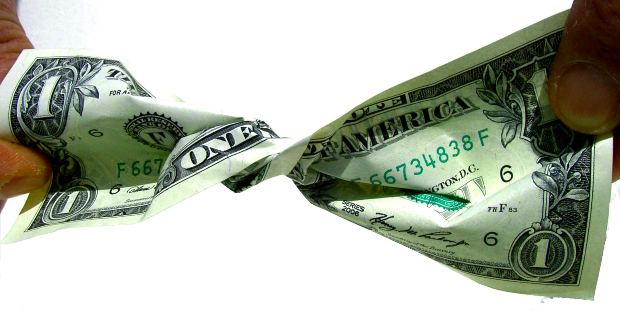 Beginning this October, the new design of the $100 bill (http://usat.ly/11PJPTy) will be put into circulation by the Federal Reserve. The new bill has multiple layers of security to help combat counterfeiters. But with approximately $1.2 trillion in circulation as of July 10, 2013 (http://1.usa.gov/m4CQG0), and more entering October 8th, we started to wonder what happens to the older bills with styles that are ready to retire into history and ones that just can’t physically carry on anymore.
Beginning this October, the new design of the $100 bill (http://usat.ly/11PJPTy) will be put into circulation by the Federal Reserve. The new bill has multiple layers of security to help combat counterfeiters. But with approximately $1.2 trillion in circulation as of July 10, 2013 (http://1.usa.gov/m4CQG0), and more entering October 8th, we started to wonder what happens to the older bills with styles that are ready to retire into history and ones that just can’t physically carry on anymore.
Turns out, the lifespan of a bill is surprisingly short, especially if it’s a $1 dollar bill which averages only 3.7 years (http://bit.ly/f5Kmri). The $100 does get a little longer with 8.9 years, unless there’s a redesign like this year, of course. As soon as the new bills hit the streets, old $100’s will be pulled every time they pass through the banks. So if these bills aren’t being passed from one hand to another for more than just a few years, what happens to them?
It starts with a balance sheet. While most monetary funds are electronic these days, they’re still being kept track of by the government, regardless of whether or not there are enough bank notes to back them up. Currently, only about 25,000 mutilated bills hit the mint annually for the sake of destruction. This is a paltry number compared to the bills that the Federal Reserve does their best to make sure gets destroyed, and most bills have an average life of around 5 years before they’re replaced with fresh ones (http://bit.ly/f5Kmri). It has been averaged that about 6 billion notes have been destroyed a year over the last few years. While this may seem like a massive red balance for the sheets, more bills are created than are ever destroyed annually.
So how does the government go about destroying 6 billion notes? Well, probably exactly the way you think. The bills are put into a shredder to ensure they are completely destroyed and not able to be restored. After being shredded into nothing, they are recycled into roof shingles or insulation for homes (http://bit.ly/16w3VEV). So the next time you wonder what happens to the waded up dollar bill in your pocket, think about how it’s possibly helping to heat your house right now.
Image courtesy of www.morguefile.com http://mrg.bz/TNOw2S



